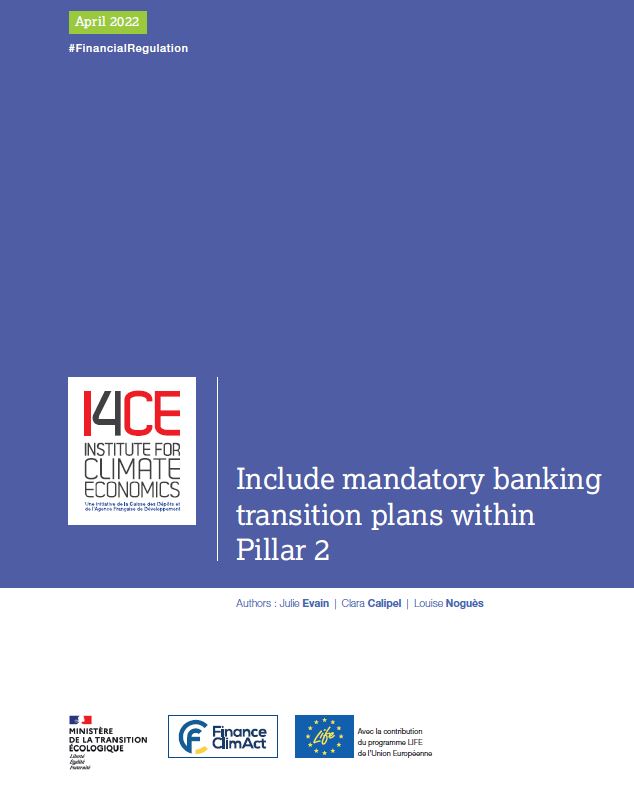Include mandatory banking transition plans within Pillar 2
The transition plans aim to establish a progressive decarbonisation strategy by 2050, in line with the European Union’s objectives. The European Central Bank, through Frank Elderson, as well as several NGOs are calling for transition plans to be made mandatory for banks and to be integrated into prudential regulation. This note first looks at why such a requirement could help to promote an orderly transition, then goes into more detail on what the content of these plans should be and what levers supervisors should have to act. Finally, it details the legislative changes needed to strengthen and clarify the current texts, as well as the more operational changes for supervisors.
Why include a transition plan requirement for banks in prudential regulations?
Several recent studies show the risks to which banks are exposed in the event of a disorderly or delayed transition. As a result, there is now a growing view that supervisors should seek to promote an orderly transition now in order to mitigate climate risks.
Existing supervisory initiatives have focused on transparency and climate stress testing. These are important steps forward, but they would not have been able to drive real change in banking practices to align with orderly transition trajectories.
Changes could therefore be made within Pillar 2 and the Supervisory Review and Evaluation Process (SREP), which would allow supervisors to use greater levers of action that are better adapted to climate risks.
What should be the content of the banking transition plans?
The details of the banking transition plan have yet to be defined. According to I4CE, three dimensions are essential and should be defined in the regulation :
- the content of the transition plans: carbon neutrality by 2050, intermediate sectoral targets, etc
- the scope of application: gradual integration of all activities
- internal implementation procedures
What levers of action will supervisors have following this transition plan obligation?
In the event of non-compliance, supervisors have a wide range of actions that they could use gradually: requests for training, changes in governance, changes in risk management, concentration limits in certain sectors, changes in compensation practices, etc. If these actions prove to be insufficient, supervisors could also impose additional capital requirements.
How can transition plans be made mandatory in the legislation?
The developments currently proposed in the banking package make it possible to make bank transition plans mandatory. However, in order for this to be as effective as possible, these formulations need to be further clarified within the CRD itself. They should also be supplemented by a reference framework with level 2 texts specifying the content, scope and governance of transition plans. Finally, EBA should not be the only institution in charge of the rules defining these plans, but it should be accompanied by environmental agencies or by EFRAG.
How to operationalise this recommendation beyond the regulations?
In order to operationalise this requirement for a banking transition plan and its integration into the SREP, three key issues should also be addressed :
- the possible clarification of the supervisors’ mandate, a step that is not indispensable but that would avoid diverging interpretations
- certification of banks’ transition plans: supervisors should retain control over implementation but could delegate certification of the robustness of the plans
- human resources issues for supervisors: focus on the Joint Supervisory Teams, which operate the SREP
In conclusion, to ensure the implementation of an orderly transition, the integration of transition plans into Pillar 2 of prudential regulation appears to be an appropriate tool. To ensure the full implementation of these plans, significant changes in practice are expected from banks and supervisors alike. To accompany these changes, the current regulations must be strengthened and clarified. The European political deadlines surrounding the banking package should provide an opportunity to amend the legal texts to provide supervisors with a common reference framework.
In 2 minutes, Julie Evain explains why it is necessary to introduce a mandatory transition plan for banks and the implications for banks and banking supervisors :

